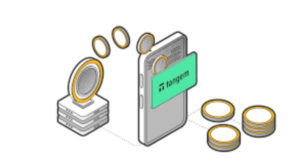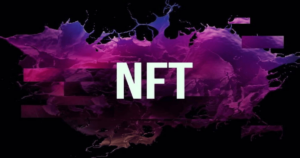Staking Coin is an essential mechanism that enhances the security and efficiency of the blockchain network. With the introduction of Proof-of-Stake (PoS), the staking process not only allows participants to earn additional profits but also contributes to the stability of the system. So, how does staking work, and what are its benefits? Let’s explore these questions in this article.
1. What is Staking?
Staking, or “depositing” in the cryptocurrency world, is simply the act of using your own cryptocurrency to participate in the blockchain network. Instead of keeping your coins in a wallet, you lock them to support the transaction validation process and protect the network. In return, you can receive rewards in the form of newly created cryptocurrency coins. This is one of the methods that allow participants to earn passive income from holding cryptocurrency.
When participating in staking, users can increase their chances of receiving rewards if they own a large number of coins. This creates competition among stakers, where those holding a large amount of coins (known as “whales”) are more likely to become the next transaction validators. However, this also carries the risk of concentrating power in the hands of the wealthy, creating a disparity between small and large investors, which could impact the fairness and decentralization of the network.
The staking process is actually quite simple. You just need to transfer your cryptocurrency from the exchange into the staking wallet of the project you wish to participate in. Then, you simply let them “work” and start earning rewards that the system provides. However, it is important to note that not all exchanges offer good staking services. Some exchanges may take advantage of their authority and reduce the rewards you receive. Therefore, when choosing an exchange, you should be cautious and thoroughly research the terms and benefits it offers.

2. How does Staking Coin work?
Staking Coin is an essential mechanism in modern blockchain ecosystems, but to fully understand how it works, you need to grasp some fundamental concepts, particularly consensus mechanisms such as Proof-of-Work (PoW) and Proof-of-Stake (PoS).
Previously, to validate transactions and create new blocks on the blockchain, networks used Proof-of-Work (PoW), which required computers to solve complex mathematical problems through mining. The reward for this process was the creation of new coins. However, this method consumed a significant amount of energy and computing resources.
Proof-of-Stake (PoS) was developed to address these issues. PoS replaces PoW by encouraging users to stake (deposit) a certain amount of coins into the network, rather than using computational power. The rewards in PoS are no longer based on an energy-intensive mining process but are distributed based on the proportion of coins a user has staked in the network. As a result, PoS helps reduce energy costs and optimize transaction processing speeds.
In addition, PoS enhances network security by creating a “value wall”—a robust layer of protection that is difficult for attackers to breach. This barrier depends on the amount and value of the tokens staked, making any attack attempts costly and economically unfeasible.
3. Advantages and disadvantages of Staking coins
When deciding to participate in coin staking, it’s crucial to carefully weigh the potential benefits and risks. Below are the advantages and disadvantages of staking coins to help you make an informed decision.
3.1 Advantages of Staking Coins
Staking requires less electricity and physical resources compared to mining, helping you save on operational and maintenance costs.
By participating in staking, you’re investing in the strength of the network, which enhances its security and stability.
Blockchains that use the Proof of Stake (PoS) mechanism typically process transactions faster and have better scalability compared to those using Proof of Work (PoW).
Staking offers passive income without the need for significant investment in mining equipment, allowing you to earn profit without high costs.
If the value of the token increases, your staking rewards could be multiplied, providing attractive earning potential.
Staking pools allow you to combine your resources with others, increasing the chances of block validation and reward collection.
Unlike trading or mining, staking doesn’t require deep expertise or extensive experience in cryptocurrency, making it accessible to a broader audience.

3.2 Disadvantages of Staking coins
- Large token holders (whales) can control the network, potentially leading to a concentration of power and unfair influence on the system.
- The value of cryptocurrencies can fluctuate significantly, causing the staked assets to lose value. This requires preparation and an acceptance of risk.
- LSome cryptocurrencies require you to lock your assets for a certain period. This can be challenging if you need to withdraw your funds urgently.
4. Staking coin wallets
To participate in staking, you need to use a wallet that supports this function. Here are some popular wallets you can use to stake coins:
- Atomic Wallet: This wallet supports a wide range of PoS tokens and offers decentralized staking services with zero fees. Tokens such as Tezos, Tron, NEO, Cosmos, VeChain, and Cardano can all be staked on Atomic Wallet.
- Trust Wallet: Similar to Atomic Wallet, Trust Wallet supports many tokens that can be staked, including Tezos, Tron, Cosmos, VeChain, and Algorand.
- Hardware Wallets (Ledger): Hardware wallets such as Ledger also support staking. However, not all PoS coins can be staked offline with a cold wallet. Hardware wallets provide enhanced security, making them a safer option for protecting your assets.
- Staking Calculators: Most wallets offer a staking calculator tool. This tool allows you to input the amount of assets you want to stake and the duration you intend to lock them, helping you estimate the rewards you will earn from staking.

Staking coins is not only a way for users to grow their assets but also an important method to maintain the security and smooth operation of the blockchain. Understanding this mechanism will help you maximize its potential in the future.














